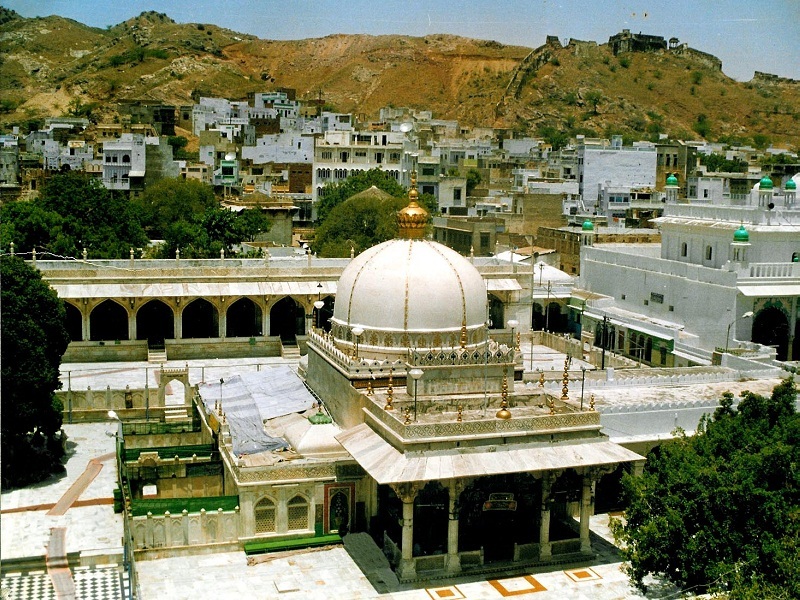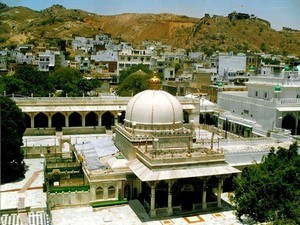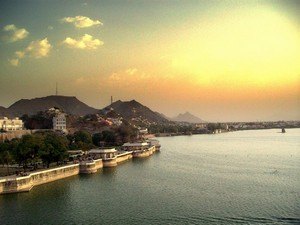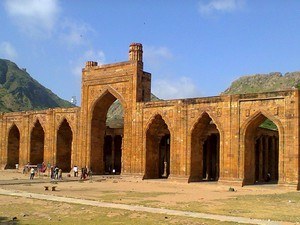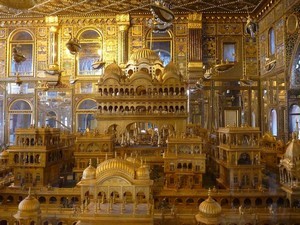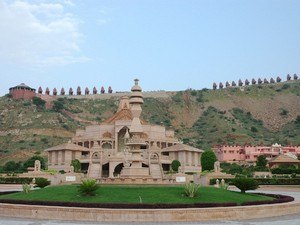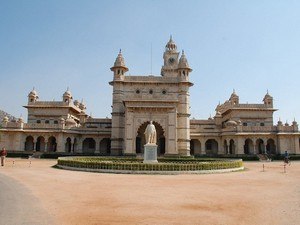Ajmer Dargah Sharif, Ajmer - Timings, Festivals, History, Darshan, Pooja Timings
 #1 of 11 Places to Visit in Ajmer
#1 of 11 Places to Visit in Ajmer
 Distance (From Ajmer Junction Railway Station): 1 Kms
Distance (From Ajmer Junction Railway Station): 1 Kms
 Trip Duration (Including Travel): 4 Hours/Half Day
Trip Duration (Including Travel): 4 Hours/Half Day
 Transportation Options: Cab / Auto / Walk/Trek
Transportation Options: Cab / Auto / Walk/Trek
 Travel Tips: None
Travel Tips: None
At a distance of 1 km from Ajmer Junction Railway Station, the Dargah of Moinuddin Chishti, also known as Ajmer Sharif Dargah or Ajmer Sharif, is an international waqf situated at the foot of the Taragarh hill in Ajmer town of Rajasthan. It is one of the most popular places of pilgrimage in Rajasthan, and among the top Ajmer places to visit.
Ajmer Sharif is the tomb of Khwaja Moinuddin Chishti. The Sufi saint is known to have come from Persia and died in 1236 CE at Ajmer. He was known for his noble teachings and peace. He devoted his life to the service and welfare of the poor and downtrodden. It is most the popular and important Muslim pilgrimage site in India. Ajmer Sharif is famous for fulfilling the wishes of the devotees. People from all the communities come here and pay homage in the dargah of Khwaja Moinuddin Chishti at Ajmer as part of Ajmer tour.
The shrine was built by Mughal King Humayun in honor of this saint. Constructed in several stages, Ajmer Sharif Dargah consists of several white marble buildings in two courtyards. The entry to the Ajmer Dargah is through the Nizam Gate which is then followed by the Shahjahani Gate, which was constructed by the Mughal Emperor Shah Jahan. Then it leads to the Buland Darwaza which was built by Mahmood Khilji. The Dargah complex contains the domed tomb of the saint. The actual tomb of the saint is enveloped by a silver railing and a marble screen. The tomb has 11 arches and a Persian inscription. It is managed by the Dargah Khwaja Saheb Act, 1955 of the government of India.
Akbar and his queen used to come here by foot on pilgrimage from Agra every year in observance of a vow when he prayed for a son. The large pillars called 'Kose Minar', erected at intervals of 3 km along the entire way between Agra and Ajmer mark the places where the royal pilgrims halted every day. In the inner courtyard of the shrine, there are two huge cauldrons with a capacity of 2240 kg and 4480 kg. It is believed that the cauldrons were offered by Emperor Akbar when the saint blessed him with an heir to his throne. These cauldrons are used for cooking kheer during special occasions.
The best time to visit the shrine is during the famous Urs Fair. It is held in the Islamic month of Rajab (May), the time when the Khwaja became one with Allah. With the commencement of the Urs festival, the daily schedule of the Dargah changes and is opened throughout the day. Muslims from all over India and even abroad throng Ajmer during the festival. It has been estimated that around 150,000 pilgrims visit the site every day.
Timings: 5 AM - 9 PM in winter & 4 AM - 10 PM in summer



